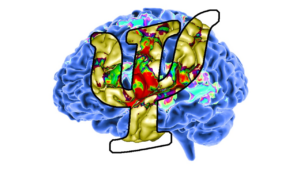Instituts Inserm de rattachement : Neurosciences, Neurologie, Psychiatrie
Welcome
Over the past 5 years, our team has focused on the multimodal features of psychiatric conditions with a neuro-developmental component. We extended our activities to cohorts of typically developing juveniles, to individuals at risk for mood disorders and addiction, and abnormalities of the social brain in autism spectrum disorders.
Highlights:
We completed the first european cohort of 2 000 adolescents followed for 10 years with our partners abroad. This multidiscipinary ressource is now combined with Young patients assessments.
1.At-risk behaviours in adolescents: the mediation of transition risk for mood disorders involves circumscribed brain regions during early adolescence. Our lab was the first to demonstrate variations in the ventromedial prefrontal, striatum and cingulate regions and in the microstructure of the adjacent white matter tracts using a longitudinal design in at-risk adolescents. Further, we reported that these changes mignt bear a prediction value in individuals. This should foster new intervention designs for targeted prevention.
Recently, the information gathered in our lab on the adolescent brain, emotion dysregulation, and transition to mood disorders, highlighting the vulnerability of neuro-affective systems in early adolescents, fueled the rationale to stratify the age of protection in adolescence in a law adopted by the French parliament ( http://www.assemblee-nationale.fr/15/dossiers/lutte_violences_sexuelles_sexistes.asp). The findings were also presented in an audition to the Sénat (7/07/2019) addressing the protection of adolescents, within the frameworkof the revisionof French Biothics laws.
2.Correlation between dopamine regulation and regional function in main psychiatric disorders.The dopamine transporter in the midbrain was correlated with the neural response in a core region of the reward system, across psychiatric disorders. This supports trans-diagnostic dimension of behaviour.
3.Neuromodulation of superior temporal cortex modifies a modelized social behaviour. Inhibition of the right posterior superior temporal region with rTMS decreased the gaze social perception. This finding paves the way for future cognitive – behavioral research on interventions and neuromodulation for personalized remediation in ASD.
4.Brain structure abnormalities were detected in pharmaco-resistant depression (TRD). This might provide a neuroimaging biomarker of vulnerability to chronicity, revealed by medication resistance.
5. We completed the first european cohort of 2 000 adolescents followed for 10 years with our partners abroad. This multidisciplinary ressource is now combined with young patients assessments.
Prospective
How will psychological, cognitive, sensorimotor and brain changes during adolescence lead to the prediction of vulnerability, or resilience, to emotion disorders and ‘at-risk’ behaviours ?
⇒ Data Fusion and Mathematical Modeling using adequate formulations on large databases of adolescents and young adults performed within the framework of the Borelli center ( https://centreborelli.ens-paris-saclay.fr/fr). Complementary ancillary studies focus on patients from clinical departments in Paris University (e.g. radiopaediatry in Necker hospital; adult psychiatry deparment/GHU-PC) in Paris Sorbonne University (child and adolescent psychiatry, Salpêtrière), or in Paris Saclay University (e.g. addictology), and in Orsay hospital.
⇒ The laboratory coordinates an international consortium targeting adolescent neurocognitive processes in depression to Promote intervention response : https://www.neuron eranet.eu/_media/ADORe_summary.pdf
At-risk adolescents, young adults, and patients hospitalized for disorders tacking on emotional dysregulation or addiction will be investigated with respect to developmental databases.
